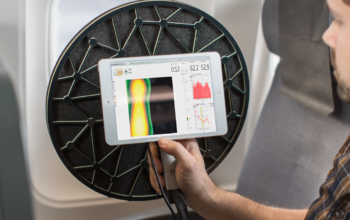Conceptually, the metaverse dates back to 1992, when it was highlighted in the science fiction novel Snow Crash by Neal Stephenson. Stephenson’s novel described how humans as avatars interacted with each other after accessing the virtual universe. Taking off from there, the metaverse has caught the attention of many big corporations like Google, Microsoft, and Facebook. Facebook has even gone on to rebrand itself as Meta to show its trust in the potential of the metaverse.
Meta also plans to carve out 10,000 high-skilled jobs in the European Union over the next few years for metaverse development.
No one corporation will own the metaverse. In fact, any organization or educational institute can build its version of the virtual space. Education in metaverse is fast catching on as many schools and colleges are leaning towards investing in metaverse learning platforms. The metaverse will be backed and driven by many other high-end technologies like Augmented and Virtual Reality, Artificial Intelligence, 5G, Blockchain, and NFTs. In-depth and immersive learning is a crucial benefit of the educational metaverse. Educators and institutes need to be metaverse ready to meet the future needs of students. In this post, we will see how this can empower students and make them ready to navigate future professions.
Keep reading to find out more about the benefits of metaverse in education.
Benefits of Immersive Learning
Immersive learning is more of a hand on approach and practice-based learning methodology. The concept recognizes that every learner is different and hence needs a customized approach to learning. Some learners rely on text, while others on audio, while some rely on visual and kinaesthetic styles. Traditionally, in the classroom setup, content is delivered mainly via audio and text.
Immersive style of learning fosters a digitally produced environment that mirrors real-life scenarios and immerses users in them. This leads to higher engagement and interaction, resulting in better processing and retention of subject matter. Students do not merely watch or listen, they act and do-they are actively involved as doers. Moreover, these spaces are risk-free and mistakes have no real consequences, except for learning from them, Hence, students feel comfortable expressing themselves without inhibitions. Frequent repetition is possible, so skills can be practiced and perfected. Learning outcomes can be measured and with real-time feedback, students can attempt for better performance with every repetition.
The prominent features include
- Engaging Learning
Difficult concepts are easy and better explained in VR
- High Sense of Presence
Virtual tours in the 3D mirror world make users feel as if they are actually in that space.
- Interactive Learning
Students can interact with digital objects in VR and minutely observe them
- Unlimited Repetitions and Watch Time
Students can revisit concepts unlimited times as per their requirements
How the Metaverse Encourages Immersive Learning
The metaverse is also referred to as the mirror world. This means that it can replicate any scenario of the real world. Moreover, it can create it in 3D, 360 degrees, and offer a multisensory impact too. Users when placed in the environment, feel a sense of presence as if they are within the environment whereas they physically are not. The metaverse hence offers a high sense of presence which facilitates interactive and immersive learning. As technology advances, the boundaries between the physical and virtual worlds will be a more unified experience.
In the metaverse, students can be placed in any situation or location. This would not have been possible in real life. In real life, teaching will happen in classrooms and audio-visual methods like presentations or videos can be shown. Realistically, it is not possible to take students to every location they learn about. However, with education in metaverse, it is possible. Students can visit the moon and dive deep into the ocean all in the same day. Teachers can also combine virtual and real trips in local areas to emphasize the learnings. And for far-off places, students can go on virtual trips.
Immersive Learning is Impactful Learning
Metaverse learning offers simulated 3D worlds that learners can access and learn and experiment with. It will help bridge the gap between theory-based and practical education. The metaverse will enable students to apply the knowledge acquired in the classroom in real-life applications and hence offer a more relevant education model. Immersive technologies like AR, VR, and the metaverse can captivate students’ interest and motivate them to learn and develop skills. It can instil creativity and curiosity which are necessary to progress.
Conclusion
Metaverse development is happening rapidly and is a matter of time before it sees mass adoption. The metaverse will massively impact the educational sector. Edverse is a pioneer in offering 3D immersive learning concepts via metaverse development. Edverse offers curated and bespoke solutions to meet targeted needs. Connect with Edverse to know and explore the future of learning and teaching.










